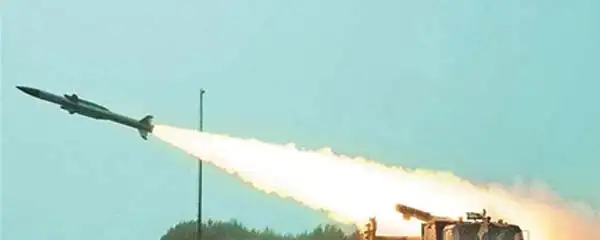Blitz Bureau
NEW DELHI: ONCE known primarily for its agricultural heartland and historical landmarks, Uttar Pradesh has decisively forged a new identity as a formidable powerhouse in India’s defence manufacturing landscape.
The Uttar Pradesh Defence Industrial Corridor (UPDIC), a flagship initiative of the state and Central governments, is rapidly transforming the state’s economic topography, channeling over Rs 25,000 crore in investments and charting a course to create more than 1.37 lakh direct employment opportunities, fundamentally strengthening the nation’s ‘Atmanirbhar Bharat’ mission.
This monumental undertaking is far more than a mere industrial project; it represents a pivotal strategic shift for India. For decades, the nation has held the distinction of being one of the world’s largest arms importers, a vulnerability that exposed its supply chains and limited its strategic autonomy.
The UPDIC is a direct and robust response to this challenge, aiming to build indigenous capabilities, reduce import dependency, and position India as a net exporter of defence hardware. By establishing this corridor, Uttar Pradesh is not only diversifying its economy but also playing a crucial role in securing the nation’s sovereignty.
A newly inaugurated ammunition facility in the Kanpur node of the Defence Corridor, is now a hub for advanced manufacturing and a key asset in India’s self-reliance goals.
Investment multiplier
The impressive figure of Rs 25,000 crore in committed investments across more than 150 Memorandums of Understanding tells only part of the story. The Uttar Pradesh Expressways Industrial Development Authority, nodal agency for the project, has successfully acquired and allotted nearly 2,000 hectares of land to defence firms, a process streamlined through investor-friendly land policies.
The economic impact extends far beyond the factory gates. Economists point to a significant multiplier effect, where every job created in the core defence sector generates several more in ancillary and service industries. This is visible in the burgeoning logistics, hospitality, real estate, and local commerce sectors around the corridor’s nodes. While specific GST figures for the corridor are not itemised, the sheer scale of construction, manufacturing, and service sector activity is a major contributor to the state’s record-breaking GST collections over the past few years. Specialisation symphony The corridor’s brilliance lies in its hub-andspoke model, with each of the six nodes developing a unique specialisation based on its existing ecosystem.
Kanpur Node, the corridor’s heavyweight, has attracted the lion’s share of investment. It is home to the Adani Defence & Aerospace ammunition complex, a sprawling facility producing a full range of small, medium, and large-calibre ammunition, from 5.56 mm infantry rounds to 155 mm artillery shells. The project is a game-changer for the Indian Army’s self-sufficiency. The presence of IIT Kanpur as a Centre of Excellence provides critical R&D support in aerospace and advanced materials. Lucknow Node is being sculpted as the corridor’s high-tech brain. The BrahMos Aerospace facility, an investment of Rs 3,000 crore, will produce the next-generation BrahMos-NG missile, a lighter, faster variant for multiple platforms. This node is also attracting firms specialising in Artificial Intelligence, defence-related software, and electronic warfare, promising to create high-value jobs for around 500 engineers and an additional 1,500 in the supply chain.

Bundelkhand lynchpin
Jhansi Node, the lynchpin for the Bundelkhand region’s development, is focused on missile propulsion and components. Bharat Dynamics Limited (BDL), a major Defence PSU, is setting up a facility to manufacture propulsion systems for anti-tank guided missiles. Close by, Global Engineers is investing in a plant for nitrocellulose, a critical raw material for propellants, ensuring end-to-end production capabilities within the region.
Aligarh Node, leveraging its proximity to the NCR, has become a hub for innovation in unmanned systems. Companies like Ancor Research Labs are producing advanced surveillance drones and anti-drone systems, addressing a critical need in modern warfare. This node is also seeing investment in small arms and electro-optics. The Agra and Chitrakoot nodes are developing a robust base of MSMEs to support the larger players with components and sub-assemblies.
Policy and infrastructure
This industrial metamorphosis is being powered by a combination of proactive governance and world-class infrastructure. The UP Defence and Aerospace Unit and Employment Promotion Policy has been a magnet for investors, offering tangible incentives such as capital subsidies of up to 25 pc, 100 pc stamp duty exemption in Bundelkhand, and deep rebates on land cost. Crucially, the Government has backed this policy with hard infrastructure. The 296-kmlong Bundelkhand Expressway serves as the main artery, providing seamless connectivity for the nodes in Chitrakoot and Jhansi to the national transport grid. Furthermore, dedicated power substations, uninterrupted water supply, and common testing facilities are drastically reducing the setup costs and timeto-market for companies.
Future-ready workforce
Recognising that advanced manufacturing requires a highly skilled workforce, the state has forged a powerful tripartite synergy between Government, academia, and industry. IIT Kanpur and IIT-BHU are not just academic partners but are deeply embedded in the corridor’s R&D framework. On ground, the curricula of local Industrial Training Institutes (ITIs) and polytechnics are being overhauled to include specialised courses in CNC machining, avionics, and composite materials. As Uttar Pradesh marches forward, the vision is clear: to create a self-sustaining, globally competitive defence ecosystem. From a state seeking investment, it has transformed into a strategic partner in nation-building. The UPDIC is more than just a collection of factories; it’s a symbol of a new Uttar Pradesh– aspirational, industrial, and integral to the security and prosperity of India.
































